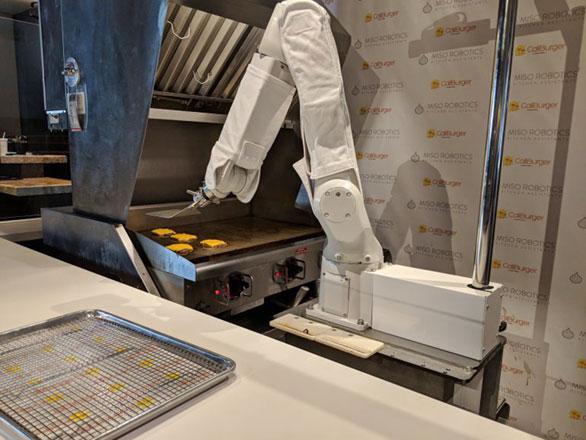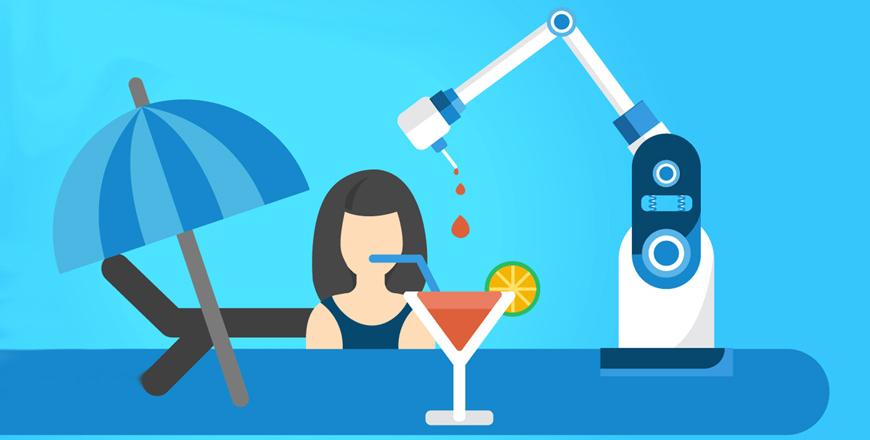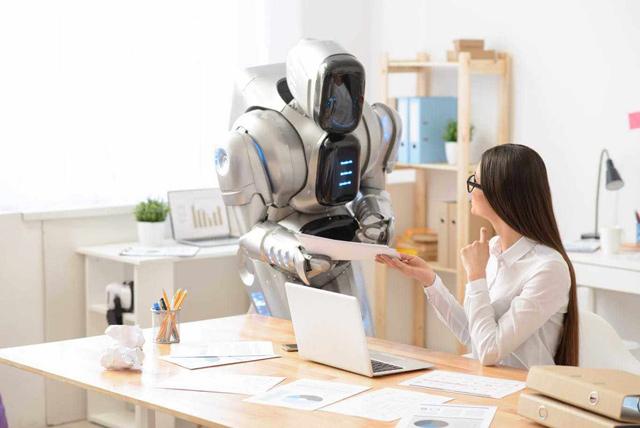You are here
Flippy robot is now cooking up burgers
By USA Today (TNS) - Mar 06,2018 - Last updated at Mar 06,2018

Flippy, the new burger flipping robot cooking at CaliBurger (Photo courtesy of USA Today/TNS)
PASADENA, California — The Caliburger chain cannot keep burger flippers employed — they quit too often, it says.
So the plan is to try something new: A robot that has been programmed to flip hamburgers all day long. Named Flippy, the $100,000 machine is capable of flipping as many as 2,000 burgers a day.
As of Monday, a human at Caliburger’s restaurant here is making the burger patties and seasoning them, and then placing them in a tray for the robot. Flippy then pulls them out, places them on the griddle, monitors their temperature, flips them and then takes them off the griddle to cool. They then get placed by a human into buns for customers.
“People see a robot, they hear robot, they assume job replacement,” says David Zito, the CEO of Miso Robotics, which created Flippy with the Cali Group, the owner of the Pasadena-based Caliburger chain. “This isn’t about replacing jobs. This is about a third hand in the kitchen.”
Whether it is burgers, cars or farming, robots are becoming capable of doing jobs that were once staples of employment. In late 2017, a study by the Pew Research Centre showed three-quarters of Americans said it is at least “somewhat realistic” that robots and computers will eventually perform most of the jobs currently done by people, and the survey found respondents worried about the fallout, such as income inequality.
Tests by restaurants using robots have been mostly viewed as a public relations stunt. In the San Francisco Bay Area, the Zume Pizza chain uses a pizza-making robot to cook the pies while Sally the robot, also in the San Francisco area, makes your salad.
If the robots do take off, they raise the prospect of sapping — or at least shaking up — one of the high growth areas of US employment. Between 2007 and 2017, restaurant jobs that focus on fast food rose 40 per cent to 4.9 million, according to the Bureau of Labour Statistics. That is faster than healthcare, construction or manufacturing.
Fast food workers have been pushing for higher wages — and some big chains, facing high turnover and voter mandates, have complied.
But not all. Many workers are still fighting to get $15-an-hour wages.
“People who work in fast-food are not scared of robots – what’s really scary is getting paid so little we need food stamps and public assistance to take care of our families,” said Rosalyn King, a McDonald’s worker from Detroit who is active in the union-backed Fight for $15 movement.
For the Caliburger chain, which advertises $3.99 “Southern California style” hamburgers, keeping employees in the kitchen is the most difficult aspect.
“We train them, they work on the grill, they realise it’s not fun...and so they leave and drive Ubers,” John Miller, the CEO of the Cali Group.
Miller hopes the robot can turn that around. From Pasadena, he is looking to bring Flippy to his restaurants in Seattle, Washington DC, Baltimore and Annapolis later this year. He has 50 stores in his chain, and says he will eventually get the robot to all of them.
Some 54 per cent of all tasks associated with fast food restaurants are poised to be automated, says McKinsey Global Institute.
At a test run recently of Flippy for the press, the robot flipped with ease, but when it took the burgers off the griddle to cool on the tray, several didn’t make it all the way, and fell off the tray. Zito said those were learning pains that would be fixed.
The robots gets direction from thermal imaging and camera vision to get direction on when to flip the burger and eventually remove it.
Flippy will most certainly take jobs away, says Julie Carpenter, a research fellow with the Ethics and Emerging Sciences Group at California Polytechnic State University at San Luis Obispo, California. But she does not see fast food going 100 per cent robotic. Restaurants will still need cashiers, people to open and close up and for other tasks.
Related Articles
In a test kitchen in a corner building in downtown Pasadena, California, Flippy the robot grabbed a fryer basket full of chicken fingers, pl
RIGA — A pasta order comes in and the robotic arm springs into action at the Roboeatz eatery in Riga.
Did you know that in the next five years more than half of all workplace tasks will be performed by machines?

















